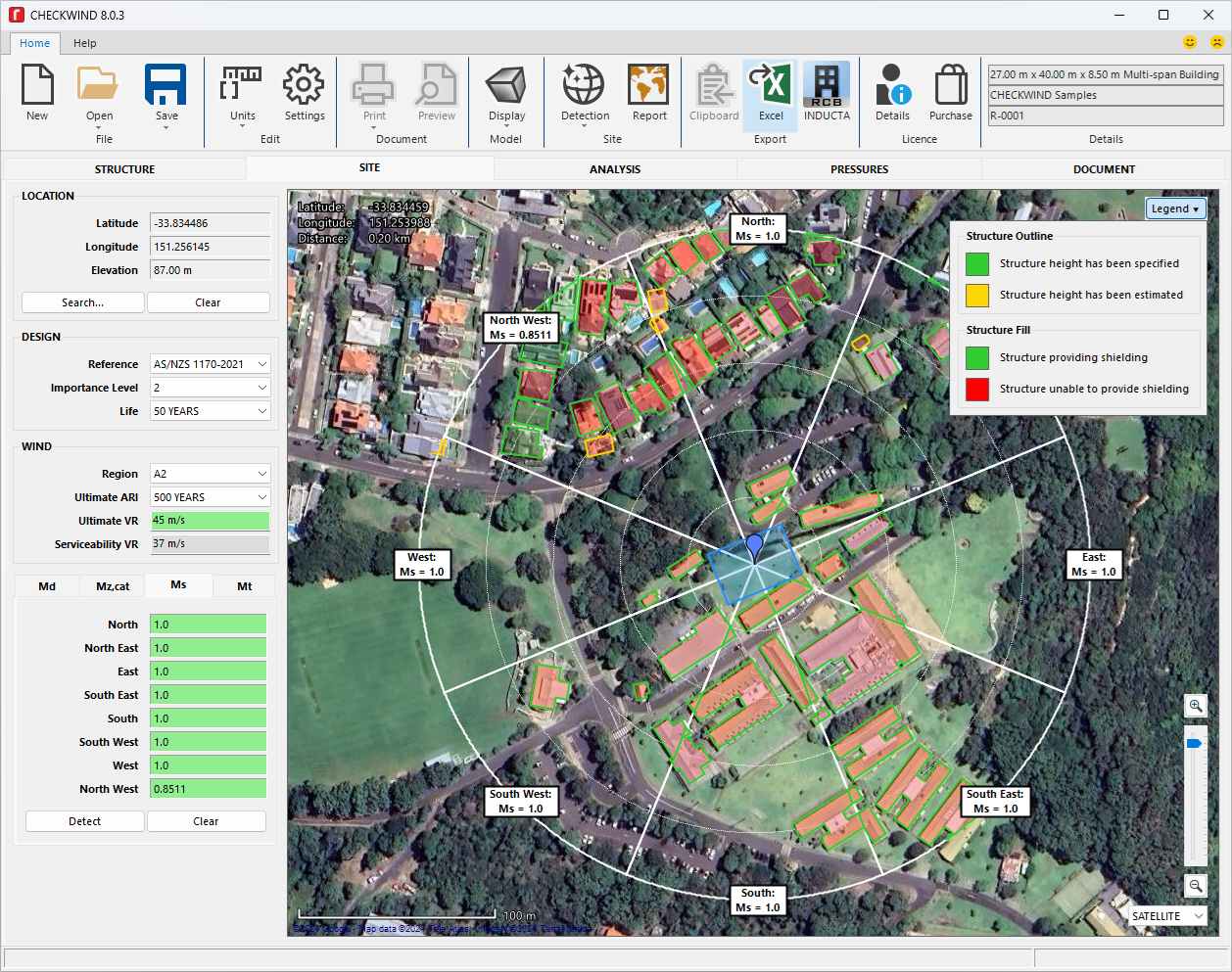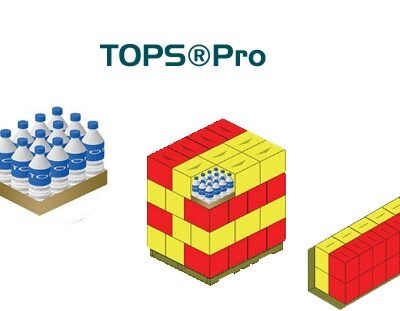CHECKWIND is an integrated wind calculation package for determining all site-specific wind load parameters within seconds to AS 4055-2012/2021, AS/NZS 1170.2-2011/2021, ASCE 7-10/16/22 (USA), CSA S37-18 (Canada), EN 1991 (Europe), EN 40 (Europe), IS 875 (India), AASHTO LRFD LTS-1, NSCP 2015 (Philippines), TIA-222-H and TIA-222-I utilising our groundbreaking Google Maps integration.
Advanced Features of CHECKWIND:
1. Wind Resource Assessment
- Long-term Wind Data Analysis: Merging on-site measurements with reanalysis datasets (e.g., ERA5, MERRA-2) for long-term wind assessments.
- Wind Flow Modeling: Accurate terrain and obstacle modeling to predict wind behavior at various heights and locations.
- Vertical Profiles: Provides wind speed and direction data at different elevations, which is crucial for tall structures or turbine placement.
2. Energy Yield Estimation
- Annual Energy Production (AEP): Precise calculation of the expected energy yield for wind turbines.
- Loss Analysis: Incorporates wake effects, turbulence, and other losses to refine energy output predictions.
- Turbulence Intensity Mapping: Identifies areas prone to high turbulence, helping in optimal turbine placement.
3. Site Suitability Studies
- Extreme Wind Speed Analysis: Evaluates maximum wind speeds for structural resilience and turbine survival.
- Wind Shear and Roughness Analysis: Studies variations in wind speed with height, impacted by terrain or vegetation.
- Wake Effects Modeling: Simulates downstream wind disturbances caused by turbines or buildings.
4. CFD Integration
- High-Resolution Flow Simulations: Uses Computational Fluid Dynamics (CFD) for detailed analysis of wind interactions with complex terrains or structures.
- Building Aerodynamics: Evaluates wind forces on architectural designs, reducing the risk of wind-related issues like vortex shedding.
5. Environmental Impact Assessment
- Noise Propagation Studies: Models wind turbine noise distribution and its impact on nearby communities.
- Shadow Flicker Analysis: Calculates shadow impact of turbine blades based on wind and sun positions.
- Dust and Pollutant Dispersion: Studies how wind transports particulates or pollutants in industrial or urban settings.
6. GIS and Data Visualization
- Map Integration: Combines wind data with GIS maps to visualize wind patterns, resource potential, and site features.
- Heatmaps: Displays wind speed, turbulence, or other parameters across the project area.
- 3D Visualization: Helps stakeholders better understand wind behavior in complex terrains.
7. Compliance and Standards
- International Standards: Ensures analysis aligns with industry standards like IEC 61400 (for wind turbines) and ASCE 7 (for structural wind loads).
- Regulatory Reports: Generates detailed reports for regulatory submissions, including wind loads, resource assessments, and environmental impacts.
8. Multi-disciplinary Applications
- Aviation: Studies wind shear and turbulence near airports for flight safety.
- Transportation: Evaluates wind effects on bridges, highways, and railway infrastructure.
- Agriculture: Assesses wind conditions for crop protection and greenhouse design.
9. Customizable and Scalable
- Modular Architecture: Allows users to tailor the software based on specific project needs (e.g., adding CFD modules or integrating third-party datasets).
- Scalability: Capable of handling projects ranging from small urban studies to large-scale wind farms.
Who Uses CHECKWIND?
- Renewable Energy Developers: For optimizing wind farm design and performance.
- Civil Engineers: To ensure buildings and infrastructure can withstand wind loads.
- Urban Planners: To mitigate wind-related challenges in cities.
- Research Institutions: For advanced wind flow studies and environmental modeling.






Reviews
There are no reviews yet.